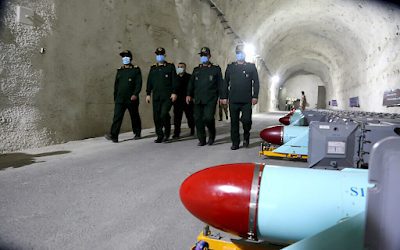There is a fundamental disconnect at the heart of the Biden administration’s strategy for preventing Iran from attaining nuclear weapons.
The US is trying, without success thus far, to persuade Iran to resume compliance with the 2015 nuclear deal (the Joint Comprehensive Plan of Action), and is more than ready to return to that deal itself after the Trump administration withdrew from it in 2018. But it also says it seeks a longer and stronger deal that would address the gaping flaws in the JCPOA.
In other words, it is having a very, very hard time persuading an emboldened Tehran to return to a lousy accord, and yet ostensibly hopes it will subsequently be able to somehow convince the ayatollahs to agree to a more effective one.
That the 2015 deal was an Iranian victory and a Western catastrophe was clear from the get-go.
Foremost among its many lacunas were its “sunset clauses”: After 15 years, it permits Iran to enrich as much uranium as it wants to 20 percent. And after 10 years, it allows Iran to manufacture and utilize advanced centrifuges. It also allowed Iran to continue R&D on advanced centrifuges — which the regime has done with alacrity — and other elements that would hasten a breakout to the bomb. It didn’t even purport to try to rein in Iranian advances on ballistic missile delivery systems. Far from dismantling Iran’s rogue nuclear weapons program, the JCPOA does not even achieve the much more limited goal of freezing and effectively inspecting it.
Since the Trump administration pulled out, Tehran has been openly breaching the deal — including by producing advanced centrifuges, enriching fast-growing quantities of uranium to 60%, and stockpiling (as of August) some 85 kilos of 20%-enriched uranium. READ MORE
Why Israel is stepping up its planning, and its rhetoric, for a strike on Iran https://amos37.com/why-israel-is-stepping-up-its-planning-and-its-rhetoric-for-a-strike-on-iran/
| Josh Toupos |


















